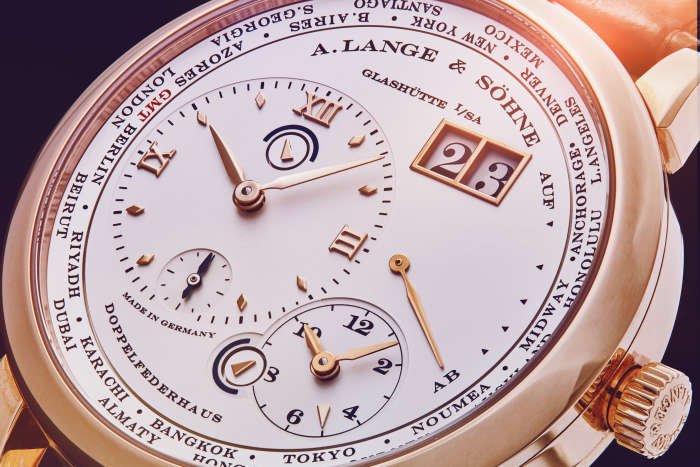Power reserve is a fundamental aspect of mechanical watches, especially in the realm of luxury timepieces where precision and craftsmanship are paramount. Here’s a comprehensive look into what power reserve means in watches, its significance, and how it affects the wearer’s experience:
What is Power Reserve?
Power reserve refers to the amount of time a mechanical watch can continue operating once it has been fully wound, either manually or automatically (via a rotor). Essentially, it indicates how long the watch can run before it needs to be wound again.
How Power Reserve Works
- Mainspring: In mechanical watches, power is stored in a coiled mainspring, which is wound either by hand (manual movement) or by the movement of the wearer’s wrist (automatic movement).
- Energy Release: As the watch runs, the mainspring gradually unwinds, releasing energy through the gear train to power the escapement and regulate the movement of the hands.
- Indicator: Many watches feature a power reserve indicator on the dial or movement to display the remaining energy. This allows wearers to know when the watch needs winding to maintain accuracy.

Importance of Power Reserve
- Convenience: A longer power reserve reduces the frequency of winding required, providing convenience for daily wear.
- Accuracy: Consistent winding ensures stable timekeeping performance. Watches with low power reserves may experience accuracy fluctuations as the mainspring nears depletion.
- Complications: Watches with additional complications (such as calendars, chronographs, or moon phases) consume more energy. A sufficient power reserve ensures these complications function smoothly without compromising accuracy.
Factors Affecting Power Reserve
- Movement Type: Manual-wind watches typically have shorter power reserves (e.g., 40-60 hours) compared to automatic watches (e.g., 48-72 hours) due to their reliance on manual winding.
- Complications: Watches with complications require more energy to operate, resulting in shorter power reserves. For example, a chronograph or a perpetual calendar may have a reduced power reserve compared to a simple time-only watch.
- Efficiency: Advances in watchmaking, such as improved mainsprings, escapements, and lubricants, contribute to enhanced energy efficiency and longer power reserves.
Examples of Power Reserve in Luxury Watches
- Rolex: Many Rolex models feature power reserves of approximately 48 to 70 hours, depending on the movement and model.
- Patek Philippe: Known for its intricate complications, Patek Philippe offers watches with power reserves ranging from 48 hours in simpler models to several days in more complex timepieces.
- Audemars Piguet: The Royal Oak series includes models with power reserves exceeding 70 hours, ensuring longevity and reliability for daily wear.
Conclusion
Power reserve is a crucial consideration for watch enthusiasts, influencing convenience, reliability, and functionality in mechanical watches. Luxury watchmakers continuously innovate to optimize power efficiency while maintaining the precision and craftsmanship that define their timepieces. By understanding power reserve and its implications, wearers can appreciate the technical mastery and attention to detail that go into creating high-performance luxury watches that stand the test of time.











